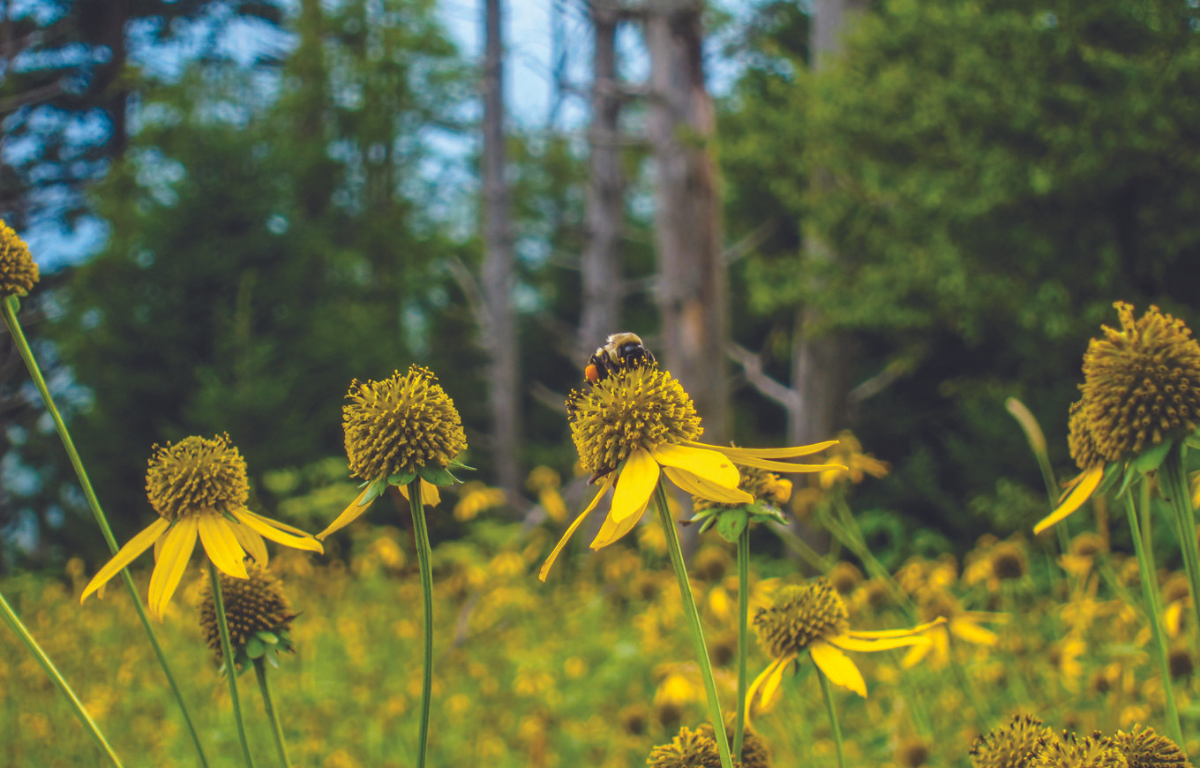ARLINGTON, VA (Virginia Farm Bureau) —Many unsung heroes are behind the abundance of food and beauty that surrounds us.
June 16-22 is National Pollinator Week, an annual event designated by Congress to highlight how essential pollinators are to the production of food and fiber. According to the nonprofit Pollinator Partnership, about 75% of all flowering plants need help with pollination and about one-third of all foods and beverages begin with pollinated crops.
Essential pollinators include honeybees, native bees, beetles, flies, butterflies, moths and birds. They also support biological diversity in natural ecosystems, with many species of insects serving as food for other wildlife.
“If they aren’t here, we won’t be here,” noted Elaine Mills, a Virginia Cooperative Extension Master Gardener and pollinator specialist.
But pollinator populations are declining worldwide due to habitat loss, pesticide use and climate change. The Virginia Department of Wildlife Resources Wildlife Action Plan identifies 60 pollinators that are considered a Virginia Species of Greatest Conservation Need.
“A lot of people think of honeybees, but it’s really our native bees that are the absolute best pollinators,” Mills said.
There are 458 species of native bees in Virginia. A majority are solitary species, with many female bees collecting nectar and pollen to feed their young and laying eggs in umderground cells or in plant stems.
To support native bees in the garden, Mills recommends leaving some bare soil for ground nesting bees; trimming large, hollow stems of old plants in the spring for cavity nesters; and tolerating some leaf damage from leaf cutter bees.
“We should really celebrate the fact that the bees can make use of our plants to provision their nests,” she noted.
It’s also a good idea to provide different types of flowers from the early spring through the fall. Some native bees, like the spring beauty bee, are pollen specialists that collect pollen from one category or species of plant to feed their young.
Virginia’s nearly 400 species of moths and 170 species of butterflies rely on various plant species for nectar and as host plants. For example, Monarch butterflies only need milkweed; swallowtail butterflies rely on plants like tulip poplar, spice bush and Golden Alexanders; skippers use grasses like little bluestem and switchgrass as host plants; and oak trees support over 500 species of caterpillars.
Mills urges gardeners to stay away from tropical milkweed and butterfly bush.
She said it’s also important to:
- Avoid planting invasive species, and grow native plants.
- Cultivate plants that offer nectar and pollen and can serve as host plants; and herbaceous and woody plants with different flower types.
- Provide a sunny spot for pollinators to warm their flight muscles.
- Plant at least one supportive plant species in a cluster to attract attention from pollinators flying overhead.
- Retain leaf litter for overwintering insect larvae.
- Leave dead trees or fallen logs on your property for cavity nesting bees and other beneficial insects.
- Create “puddling areas” for butterflies with shallow sources of water in containers.
- Buy untreated plants from a reputable nursery, and avoid using pesticides. Rely on beneficial insects for insect control.
Gardeners with small spaces can learn how to support native pollinators during Mills’ “Container Gardening with Native Plants” webinar on June 20 from 10-11:30 a.m. Registration is free. Visit the Master Gardeners of Northern Virginia website for more information.
The MGNV website also features a suite of pollinator resources, including a recorded presentation by Mills on supportive gardening practices.
Read Virginia Tech’s study of 25 common garden plants that attract abundant and diverse insect pollinators.




